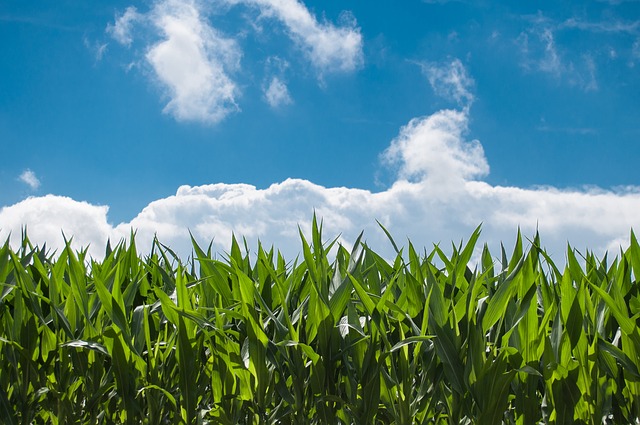Corn, “the vegetable that grows on an ear,” is a staple in most American diets. Read on for info on corn harvests, varieties of corn, a delicious corn recipe, and more from the Old Farmer’s Almanac for Kids!
A Cornucopia of Corn Facts
Keep the Kernels Straight
-
Dent corn, named for the little dent that appears on each side of a kernel when it dries, is grown to feed cows and chickens. Nearly 60 percent of all the corn grown in the U.S. is dent corn.
-
Flint corn kernels have a hard exterior. They are often ground up to be used as feed for livestock. The white, yellow, red, and dark blue kernels (sometimes all on one ear!) are also used for decorations.
-
Sweet corn is the type that people eat.
-
Popcorn is a type of flint corn.
-
Flour corn is used to make flour for baking.

Corn kernels.
Field Facts
-
Corn is grown in blocks because wind carries the pollen from the tassels of one stalk to the silk of another plant nearby. Sometimes farmers walk through the rows early in the morning and gently shake the stalks to set free the pollen.
-
Popcorn and sweet corn must be grown in separate gardens far away from each other. If they are close, they can cross-pollinate and produce sweet corn kernels with a hard exterior and bland taste.

Corn field.
How to Know When It’s Time to Harvest
-
Sweet corn: Depending on the variety of sweet corn and the season’s weather, yours will be ready to harvest in 60 to 90 days. Check it when the silk starts turning brown and the husks are still green. Peel a portion of husk and prick a kernel. If milky liquid comes out, the corn is ready to be picked. If the liquid is clear, the corn is immature. If there is no liquid, the kernels are dry and it’s too late.
-
Popcorn: Leave the ears on the stalks until the husks are dry and the kernels are hard. Then, harvest the ears, pull off the husks, put the cobs into mesh bags, and hang the bags to dry in a warm, ventilated place. Pick off a few kernels once or twice a week and try popping them. If they pop well and taste good, the corn is ready. If the popcorn is chewy, dry the cobs longer. To remove dried popcorn kernels from the cob, rub two ears of corn together. The kernels will fall off. Or, hold an ear of corn with both hands and twist it. (Do this over a bucket or pot.) Leave the small kernels at the tip of the ear: They won’t make good popcorn. Store dried kernels in clean, airtight containers.

Popcorn Balls
You will need:
16 cups popped popcorn
½ cup sugar
½ cup dark corn syrup
butter, for greasing your hands
Put the popcorn in a very large bowl. Put the sugar and corn syrup in a saucepan. Cook on medium heat and stir until the sugar is just dissolved. Remove the pan from the heat and pour the mixture over the popcorn. Stir the popcorn gently until it is evenly coated. Rub butter on your hands. Gently form the popcorn mixture into balls by hand. Wrap each in cellophane wrap or waxed paper.
Makes about a dozen balls.
